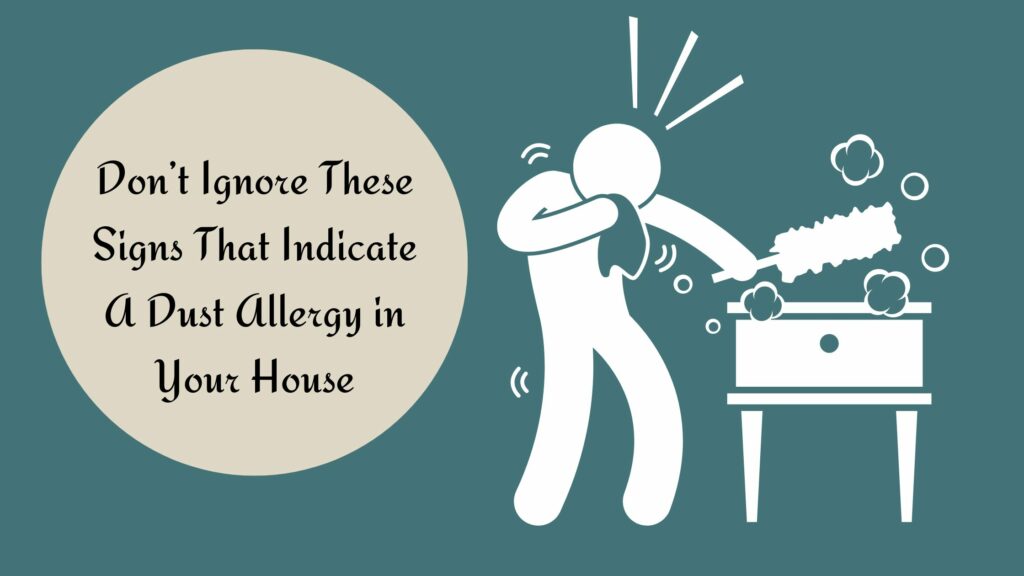Signs You Are Allergic To The Dust In Your Home
Is it possible that the dust in your house is causing you to suffer from allergy symptoms? If so, you’re not alone. Each year countless people are affected by allergies related to dust mites and other household allergens.
What causes a lot of dust in your house?
Dust in your house can come from a few different sources. Common causes include dirt, clothing, pet dander, cobwebs, upholstered furniture, carpet, and rugs. Plus, mold, pollen, cockroaches, and dust mites can also contribute to your home’s dust.
It’s important to note that even if you don’t have any visible dust in your home, you may still be at risk of having an allergy to the dust in your house. Dust mites are microscopic and can’t be seen by the naked eye.
Signs you are allergic to the dust in your home

According to the Mayo Clinic, some of the most common signs of a dust allergy include sneezing, coughing, itchy eyes, runny nose, and postnasal drip. Other symptoms may include scratchy throat, wheezing or chest tightness, asthma-like symptoms, and skin reactions like eczema or hives.
The American College of Allergy, Asthma & Immunology also suggests that shortness of breath and red or watery eyes are possible signs of an indoor allergen such as dust mites, mold, or animal dander. If any of these symptoms sound familiar, then there’s a good chance you may have an allergy to the dust in your house.
If you think you have an allergy to dust, the best way to confirm a diagnosis is to visit your doctor or an allergist. After taking a medical history and conducting allergy tests, they can provide you with medications and treatments that can help you manage your symptoms.
In the meantime, it’s important to take steps to reduce the number of allergens in your home.

How to reduce dust in your home
You can reduce your exposure to dust and minimize the chances of an allergic reaction. Here are some tips to reduce your risk of dust allergies:
1. Clean regularly and thoroughly
Vacuum carpets, upholstery, and furniture at least once per week. Use a vacuum cleaner with a HEPA filter or double-bag system that traps small particles in the air. Make sure to change the filters regularly or buy newer models with better filtration systems.
2. Regularly replace bedding and pillows
Wash sheets, blankets, and pillowcases at least once per week in hot water (130°F is ideal) to kill any dust mites that may have found their way into fabric fibers. Replace pillows every year or use hypoallergenic covers on them instead.
3. Remove clutter from living spaces
Bookshelves, tables, dressers, and any other flat surfaces easily collect large amounts of dust if not cleaned often enough or thoroughly enough (vacuuming alone won’t do). Make it a point to regularly remove clutter from these areas and vacuum frequently for best results!
Learn More: The 10 Easiest Ways to Keep a Clean Home






